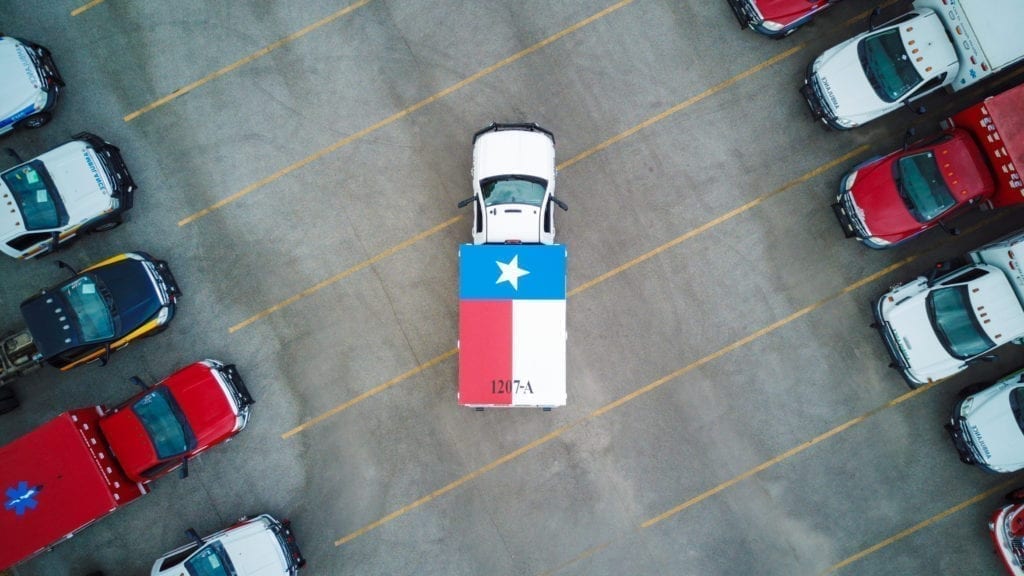We frequently hear the question, “Can you build to any of the safety standards?” Like any reputable builder in the ambulance industry the answer is of course we can and do. However, the standards landscape has changed substantially over time and now there are a few more things to consider.
A Brief History of the Ambulance Standard
Probably the most widely known ambulance safety standard is KKK-A-1822, commonly known as Triple-K, and presently on version F. Put forth in 1974 by the General Services Administration of the United States, Triple-K sought to establish a minimum safety and design standard for ambulances purchased with federal funds.
In the ensuing years, as many as 30 states ended up adopting this standard as the baseline for vehicle procurement. Of course that meant there were still a number of states that didn’t mandate using Triple K in the procurement process. In these cases, agencies typically left those design and safety decisions up to the local EMS department and their expertise. This was the case for many years in our home state of Texas, for example.
The Rise of the New Standards
Over time other organizations added elements to the foundation set in Triple K. The Ambulance Manufacturers Division (AMD) of the National Truck Equipment Association (NTEA) created a set of performance standards that helped ensure consistency in the realm of testing procedures that referred back to the Triple K specification. Since 2002, the K spec has referenced these 25 standards promulgated by the AMD.
The National Fire Protection Agency (NFPA) began work in 2008 on a set of specifications for ambulances. This represented a natural outgrowth of an increasing set of circumstances which saw municipal Fire Departments adding EMS under their umbrella. NFPA describes standard 1917 as follows:
Developed with consideration of the Federal Specification KKK-A-1822 and NFPA 1901: Standard for Automotive Fire Apparatus, NFPA 1917 defines the minimum requirements for the design, performance, and testing of new automotive ambulances intended for use under emergency conditions to provide medical treatment and transportation of sick or injured people to appropriate medical facilities.
nfpa.org
In 2013, the Commission on Accreditation of Ambulance Services (CAAS) started reviewing the existing ambulance specifications with the goal of establishing a consensus based set of standards of their own. CAAS received certification from the American National Standards Institute (ANSI) as a Standards Developer in late 2015 and published version 1.0 of their Ground Vehicles Standard effective July 1, 2016. Version 2.0, the current revision, is available here.
Additional Input
All of these standards had heavy input from industry leaders as well as groups like the National Institute for Occupational Safety and Health (NIOSH), the Society for Automotive Engineers (SAE), and the National Association of State EMS Officials (NASEMSO).
A great deal of design, testing, data analysis, and more has gone into the creation of all the different standards and represents a significant step forward in terms of the number of voices in the discussion and stakeholders at the table.
So Now What?
We hear current and potential customers consistently asking about which standard they should choose to build to, which one will be best for their department, and even which standard applies in their jurisdiction.
Another big question surrounds the certification of remounts. As of this writing, both NFPA 1917 and CAAS GVS v2.0 address remounts within their respective standards. It is now up to the state regulatory bodies to consider adopting the standard in their entirety, including the remount section, or some portion of the standard.
And while Frazer builds certified and tested vehicles to all the different specifications, we recognize that each department must meet different needs and will have to tailor that choice based on the challenges and mission as they see it, or will simply have to adopt whatever standard their state has decided will be in force.

In Texas, for example, the state has refrained from saying which standard a department must choose, only that they must choose one. This approach makes sure that agencies at least meet a minimum set of performance and construction standards, but lets them work with the one that best meets their individual needs. Texas has also, for the meantime, refrained from requiring remounts to meet a current standard.
If you already know the standard in force for your department, rest assured Frazer can build your vehicle to meet those requirements. You can click here to read more thorough descriptions of the different standards and their history. Your state Office of EMS is the ultimate authority regarding what applies to you, but if you’re having difficulty navigating those waters, a Sales Team member can help research those requirements. We can also walk you through some of the major and minor differences among the different specs, and depending on your local requirements, help give you a sense of which one might best fit.

